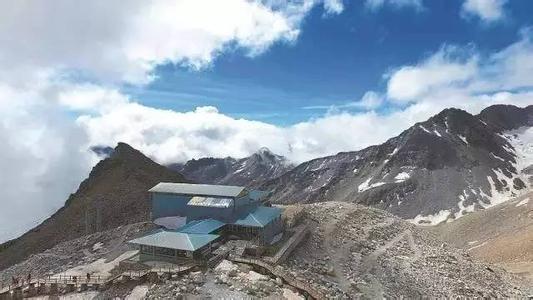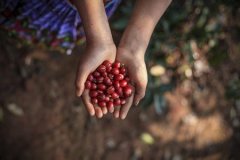A brief introduction to the description of flavor and aroma characteristics of Nicaraguan boutique coffee beans with moderate acidity

Coffee is a pillar industry in Nicaragua, producing nearly 100,000 tons of coffee beans every year. Many people who have tasted Nicaraguan coffee usually think that it is no different from Salvadoran coffee or Honduran coffee. It is full-bodied, smooth and delicate, with a slightly bitter finish, like a faint taste in a wine.
In many countries, coffee production will be seriously affected for political reasons. Nicaraguan coffee industry is no exception. The 1979 revolution forced coffee planters to flee to Miami. A period of indecision followed, when the government considered whether to redistribute land, including many plantations, which led to a shortage of coffee and a decline in production, from more than 1 million bags in the early 1970s to less than 600000 bags in 1990. Now the Government has opened up the coffee industry and private owners have taken control of the market. The best coffee is produced in Sinotega and Novo Segovia in Matagalpa. It has moderate acidity, delicious aroma and is very lovely.
Nicaragua is now one of the poorest countries in Central America. Due to its poor economic foundation, the coffee industry is still relatively backward, while coffee farmers are in extreme poverty. Fortunately, Nicaraguan coffee has received some foreign aid funds to improve the quality of its coffee. The coffee produced in Nicaragua's Madagelba, Sinodega and Segovia is highly respected by coffee lovers all over the world. The coffee produced in Madaguelba, in particular, tastes very similar to Kenyan AA coffee.
Nicaragua is one of the major producers of coffee in the world, producing high-quality coffee. The well-known coffee chain Starbucks also has cooperative coffee farmers in Nepal. Nicaragua has a unique environment, which is located in central Central America, bordered by the Pacific Ocean to the west and the Caribbean Sea to the east. The highlands in the north and the coastal plains in the east are part of the Central American volcanic belt. The eastern plain is high-temperature and rainy, with a tropical maritime climate. The fertile volcanic soil, coupled with hidden planting methods, provides a good growing environment for coffee.
Nicaraguan coffee is rich in purity and fragrance. The right balance of acidity and bitterness is regarded as top grade in the eyes of international coffee connoisseurs.
However, Nicaragua is one of the poorest and backward countries in the world, with backward production methods and management concepts, coupled with the freedom of the Latin American people, poor coffee production and shipping quality, or no sense of time. Therefore, Cafe Nor has a Danish professional manager, Frederick, resident on the farm, living with coffee farmers to produce coffee, ensuring the quality of coffee beans and shipping on time, so that Chinese people can enjoy high-quality Nicaraguan top coffee.
Nicaraguan coffee has a wide range of flavor properties. Some coffee has a high alcohol thickness like Mexican coffee, while others have bright acidity like African coffee. Most of the varieties used in Nicaraguan coffee are traditional Tibica, and a few varieties of bourbon and Kaddura are grown.
Generally speaking, Nicaraguan coffee is characterized by calmness but without losing its flavor. Both Full city and Viennese are good choices when baking Nicaraguan coffee. Medium and deep roasting will bring mellow bitterness and excellent balance to Nicaraguan coffee. 69% of the Nicaraguan population are of mixed Indo-European origin. The official language is Spanish. Most of the residents are Catholic.
In 1522, Spain began to colonize Nicaragua. On September 15, 1821, Nicaragua got rid of the Spanish colonial shackles and declared its independence. From 1822 to 1823, Nicaragua joined the Mexican Empire. In 1839, Nicaragua established the Republic of Nicaragua, Lake Nicaragua is the largest lake in Central America, located in southwestern Nicaragua. The local Indians call it Lake Corsi Walka, which means "freshwater sea". Lake Nicaragua is 160km long, with an average width of 60km and an area of 8264 square kilometers. Tens of thousands of years ago, Lake Nicaragua was an bay of the Pacific Ocean, cut off from the sea by volcanic eruptions. With the passing of the sun and the moon, the lake gradually diluted and became a freshwater lake. The marine fish that live in the lake also adapt to the desalination of the water and survive. At the beginning of the 21st century, there are still thousands of sharks, swordfish, silver carp and other marine fish in the lake. It is said that Lake Nicaragua is the only freshwater lake in the world that breeds marine fish.
At the beginning of the 21st century, there is a 19-kilometer isthmus connecting the Pacific Ocean and Lake Nicaragua. The water depth in the isthmus varies from 23 meters to 70 meters. The lake flows into the Caribbean through the San Juan River. The Tipitapa River connects with Lake Managua in the northwest.
Nicaragua is now one of the poorest countries in Central America. Due to its poor economic foundation, the coffee industry is still relatively backward, while coffee farmers are in extreme poverty. Fortunately, Nicaraguan coffee has received some foreign aid funds to improve the quality of its coffee. The coffee produced in Nicaragua's Madagelba, Sinodega and Segovia is highly respected by coffee lovers all over the world. In particular, the coffee produced in Madaguelba is very similar in taste to Kenyan AA coffee.
When tasting Nicaraguan coffee, it is best to drink cold water first, so that you can better feel its mellow taste. Drink coffee while it is hot, because the tannins in Nicaraguan coffee are easy to change during cooling, and the taste becomes sour, which will affect the flavor of the coffee. You can add the right amount of sugar, and then add cream. Enjoy a cup of high-quality Nicaraguan coffee, you can not only experience the different levels of coffee taste, but also help to improve the ability to appreciate coffee.
Coffee is Nicaragua's main export. According to the president of the Nicaraguan Coffee Farmers' Federation, due to the poor harvest of coffee in Nicaragua's Pacific region, the country's total coffee production in 1998 may be 12% lower than that in 1997. In the 1997-1998 coffee year, Nicaragua harvested a total of 1.422 million bags (46kg per bag) of coffee, the best harvest in 14 years after coffee production hovered around 1 million bags. It is estimated that the income from coffee exports in 1998 will be about 1.6 billion US dollars, and Nicaraguan coffee production will drop sharply. Wei Kailei coffee is Nicaragua's main export product. According to the president of the Nicaraguan Coffee Farmers' Federation, due to the poor harvest of coffee in Nicaragua's Pacific region, the country's total coffee production in 1998 may be 12% lower than that in 1997 and 1998.
Nicaragua is located in central Central America, bordered by the Pacific Ocean to the west and the Caribbean Sea to the east. The highlands in the north and the coastal plains in the east are part of the Central American volcanic belt. The eastern plain is high-temperature and rainy, with a tropical maritime climate. The suitable climate provides an excellent growth environment for the cultivation of coffee.
High-quality Nicaraguan coffee, grown in the north and middle of the country.
Important Notice :
前街咖啡 FrontStreet Coffee has moved to new addredd:
FrontStreet Coffee Address: 315,Donghua East Road,GuangZhou
Tel:020 38364473
- Prev

A brief introduction to the treatment method of grinding degree and baking degree of noble Cuban crystal mountain boutique coffee beans
Cubita, the designated coffee of the Cuban Embassy, attended the celebration of the 50th anniversary of Sino-Cuban friendship. Unique characteristics: Noble, tender, elegant Cubita are produced from the pollution-free Crystal Mountain Coffee in the high altitude areas of Cuba, which is adjacent to the Blue Mountain Mountains of Jamaica, with similar climatic conditions, comparable to Jamaican Blue Mountain Coffee. Crystal Mountain is also known as the Blue Mountain of Cuba.
- Next

A brief introduction to the origin, development, history and culture of Nicaraguan boutique coffee beans with mild taste
Nicaragua is located in central Central America, bordered by the Pacific Ocean to the west and the Caribbean Sea to the east. The highlands in the north and the coastal plains in the east are part of the Central American volcanic belt. The eastern plain is high-temperature and rainy, with a tropical maritime climate. The suitable climate provides an excellent growth environment for the cultivation of coffee. High-quality Nicaraguan coffee, grown in the north and middle of the country. Coffee is Ni.
Related
- Detailed explanation of Jadeite planting Land in Panamanian Jadeite Manor introduction to the grading system of Jadeite competitive bidding, Red bid, Green bid and Rose Summer
- Story of Coffee planting in Brenka region of Costa Rica Stonehenge Manor anaerobic heavy honey treatment of flavor mouth
- What's on the barrel of Blue Mountain Coffee beans?
- Can American coffee also pull flowers? How to use hot American style to pull out a good-looking pattern?
- Can you make a cold extract with coffee beans? What is the right proportion for cold-extracted coffee formula?
- Indonesian PWN Gold Mandrine Coffee Origin Features Flavor How to Chong? Mandolin coffee is American.
- A brief introduction to the flavor characteristics of Brazilian yellow bourbon coffee beans
- What is the effect of different water quality on the flavor of cold-extracted coffee? What kind of water is best for brewing coffee?
- Why do you think of Rose Summer whenever you mention Panamanian coffee?
- Introduction to the characteristics of authentic blue mountain coffee bean producing areas? What is the CIB Coffee Authority in Jamaica?

